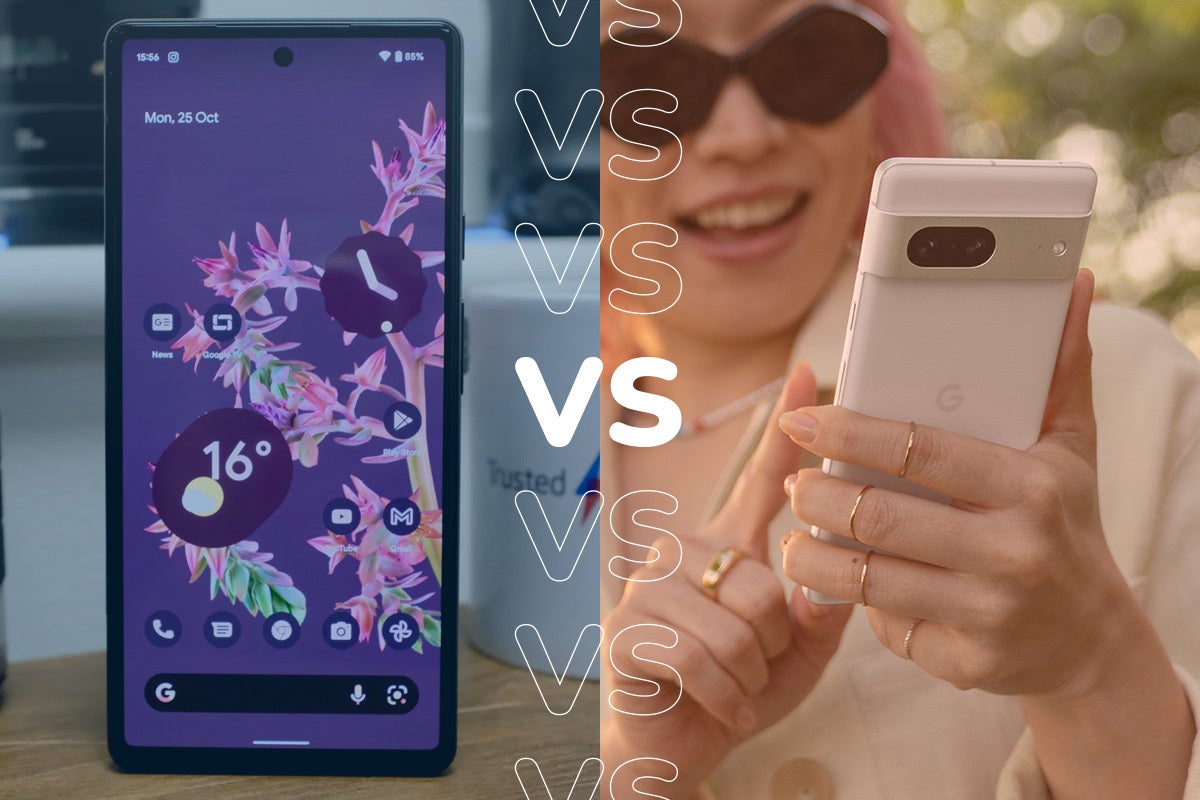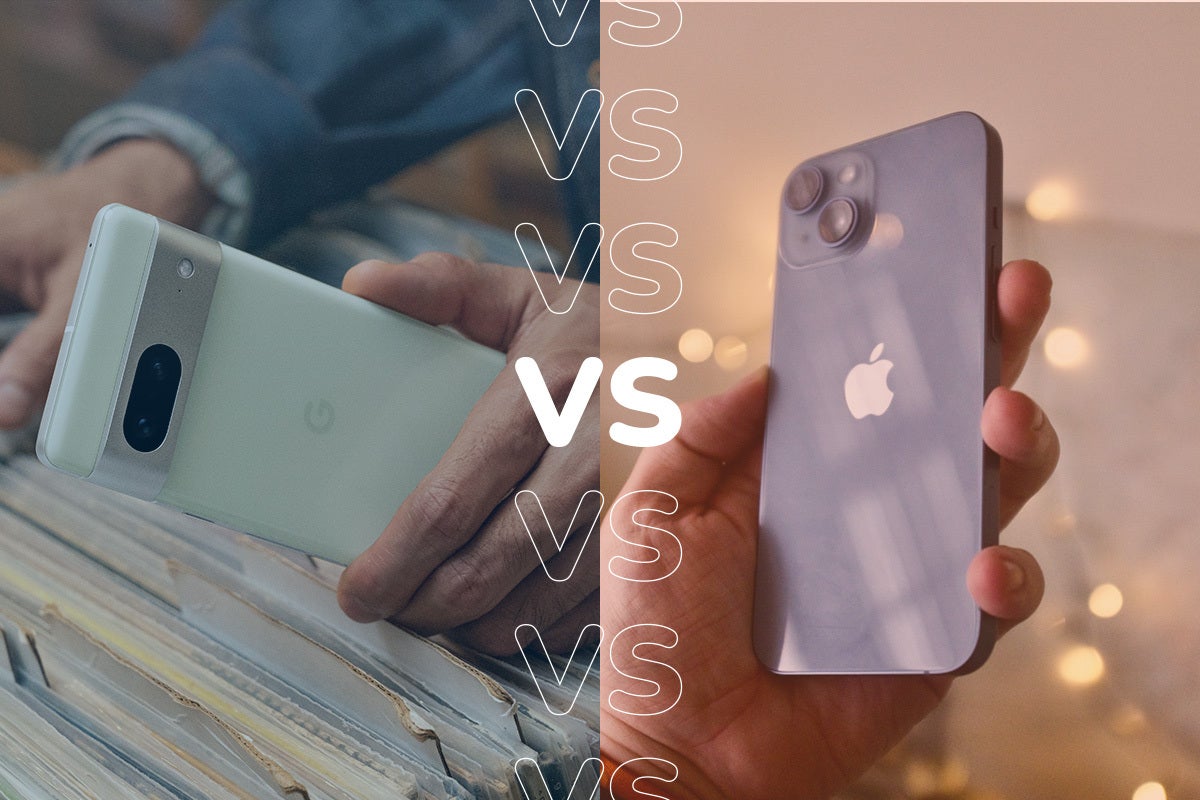Pixel 7 vs Pixel 7 Pro: Which one is the best Google phone?
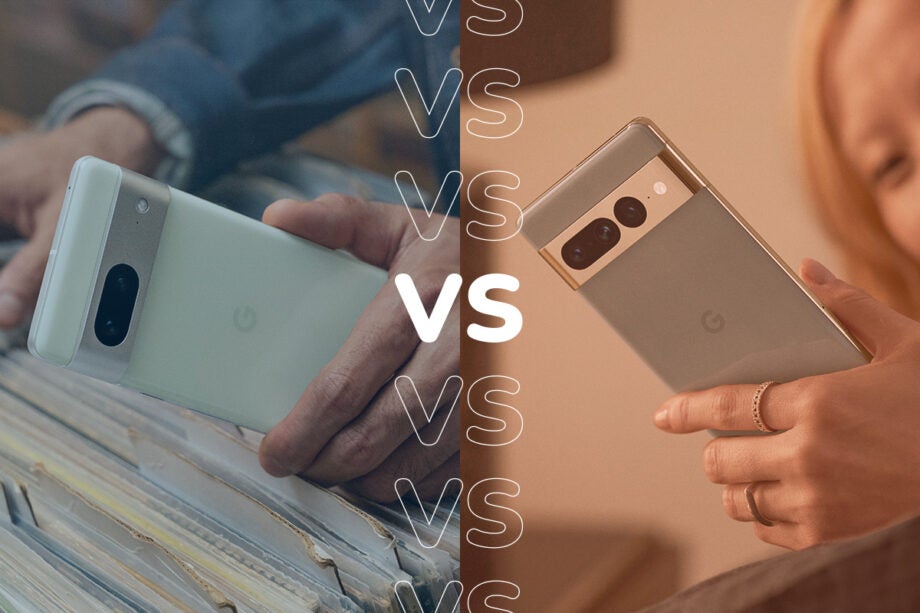
The Pixel 7 Series is officially available to buy, but how does the base model compare to the latest Pro variation?
The Pixel 7 and the Pixel 7 Pro , Google’s latest smartphones, are now on the market, boasting newer chipsets and even more features than their predecessors. Since we’ve been able to thoroughly review each handset, we thought it was time to run through every difference so you can decide which phone is the best for you.
Read on to find out everything you need to know, including the pricing, battery life and specs.
Price
The first thing to note about the two handsets is the difference in price. Both are available to buy directly from Google and from third-party retailers, but the Pro edition is significantly more expensive than the standard edition.
You can see the price breakdown for the Pixel 7 below:
- 128GB: £599
- 256GB: £699
And the breakdown for the Pixel 7 Pro can also be found below:
- 128GB: £849
- 256GB: £949
Camera
The Pixel 7 packs a 50-megapixel wide camera (f/1.8), alongside a 12-megapixel ultrawide camera (f/2.2) with a 114-degree field of view. We enjoyed using this camera and we were able to capture some great shots in various lighting conditions.
Some of the pictures we described as jaw-droppingly good, with punchy but not unnatural vivid colours that pack a lot of detail. We noted that pictures were not washed out even in direct sunlight and that the ultra-wide sensor was able to squeeze even more into the frame, which is ideal for scenic shots.
The Pixel 7 does not come with a dedicated telephoto sensor, unlike the Pro variation, meaning that you need to use the digital zoom capabilities for any up-close shots
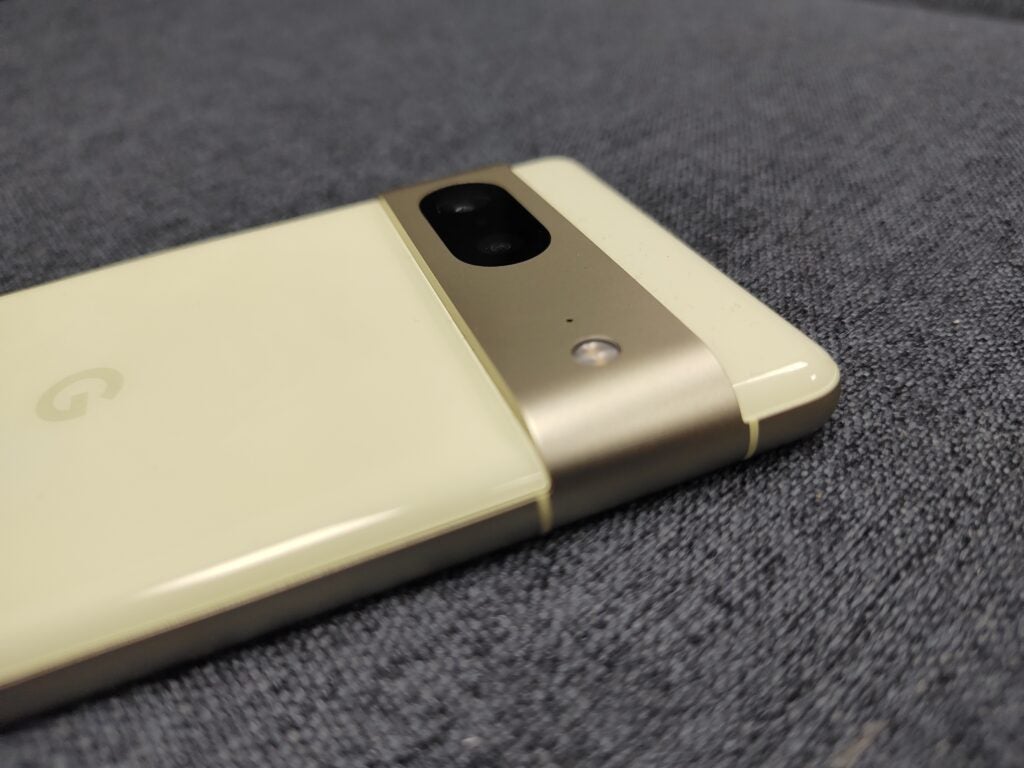
The front camera is the same as the Pixel 7 Pro, using a 10.8-megapixel sensor (f/2.2) with the Fixed Focus feature included. It can shoot in 4K, and we noted how detailed and natural selfies looked on the Pixel 7.
Looking at the Pixel 7 Pro, it has the same 50-megapixel wide camera, with a 12-megapixel ultra-wide camera. The ultra-wide sensor has a better field of view, at 125.8-degrees instead of the vanilla model’s 114 degrees. It also boasts a 48MP telephoto camera (f/3.5) which supports up to 5x optical zoom and Super Res Zoom up to 30x.
We also loved the Pixel 7 Pro’s camera; it produced shots that were full of detail with dynamic range and rich, contrast-heavy colours. We also noted how well Google’s Real Tone feature worked, as it could represent a better range of skin tones accurately and naturally.
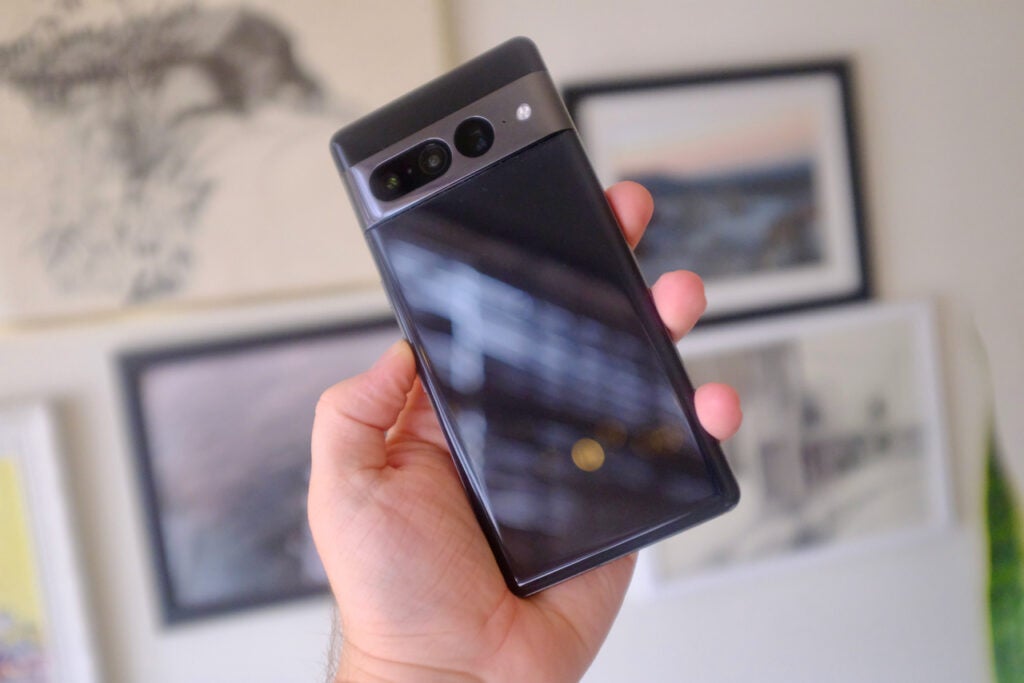
The exclusive telephoto sensor also worked well, using optical zoom and AI software. We thought that there was a noticeable jump when the software processing takes over, producing detailed shots that we thought outpaced the iPhone 14 Pro.
Overall, the Pixel 7 Pro produced a better range of photos thanks to the added telephoto lens, although both devices produced vivid and detailed shots that rival some of the biggest brands on the market. If a great camera is important to you, make sure you check out our best camera phone list, in which the Pixel 7 Pro does make the cut.
Battery
The Pixel 7 comes with a 4355mAh battery, while the Pixel 7 Pro comes with a 5000mAh battery. They both have support for fast charging, wireless charging and battery share, allowing you to charge other devices wirelessly.
From our time with the base model, we would usually reach the end of the day with around 20% of the battery life left, even after heavy use. Since the charging brick is not included with the phone you will have to provide your own, and we thought that the recharging
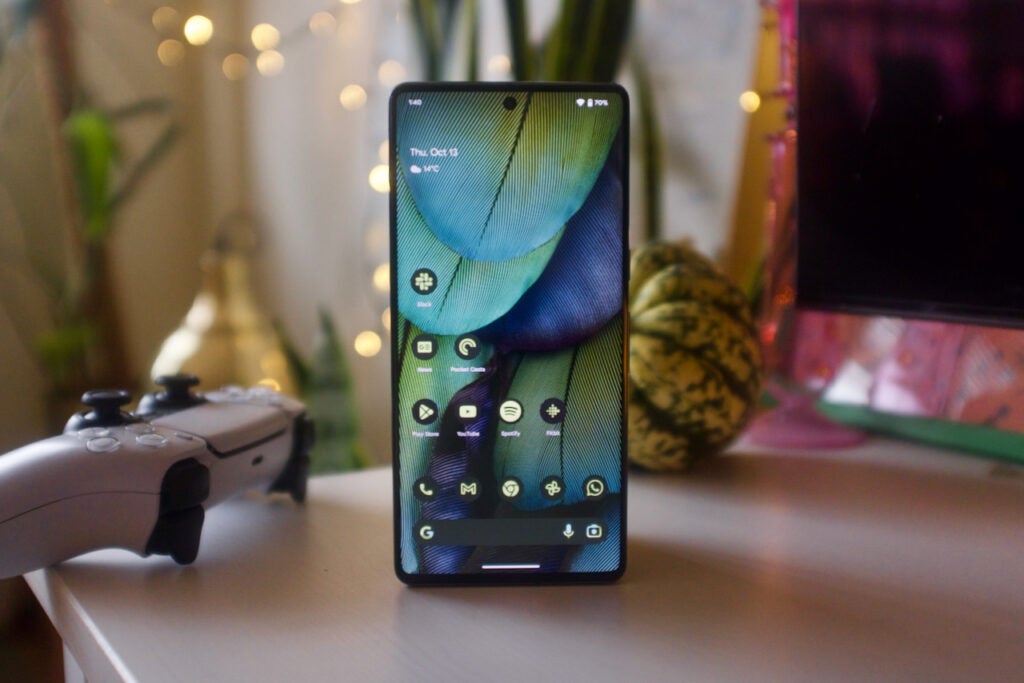
The Pixel 7 Pro was not too impressive, giving us similar battery results to the Pixel 6 Pro. We had between 10-15% of battery left at the end of each day, and it took us up to 90 minutes to charge up the phone fully since it also does not come with a brick charger included in the box.
The battery of the Pixel 7 series does leave a lot to be desired overall, and it pales in comparison to some of the other phones we have reviewed from different brands. Thankfully, both devices make up for the battery shortfalls in other areas.
Screen
The Pixel 7 comes with a 6.3-inch AMOLED display with a 1080x2400p resolution. In our review, we thought that it was bright enough to be used in direct sunlight, with Google claiming that it supports up to 1,400 nits at its peak brightness.
The maximum refresh rate of the Pixel 7 is capped at 90Hz, meaning that it doesn’t feel as fluid when you’re scrolling through articles or apps, however, in practice, we thought it did work fine. We thought the screen was detailed and punchy and that most users would be more than happy.
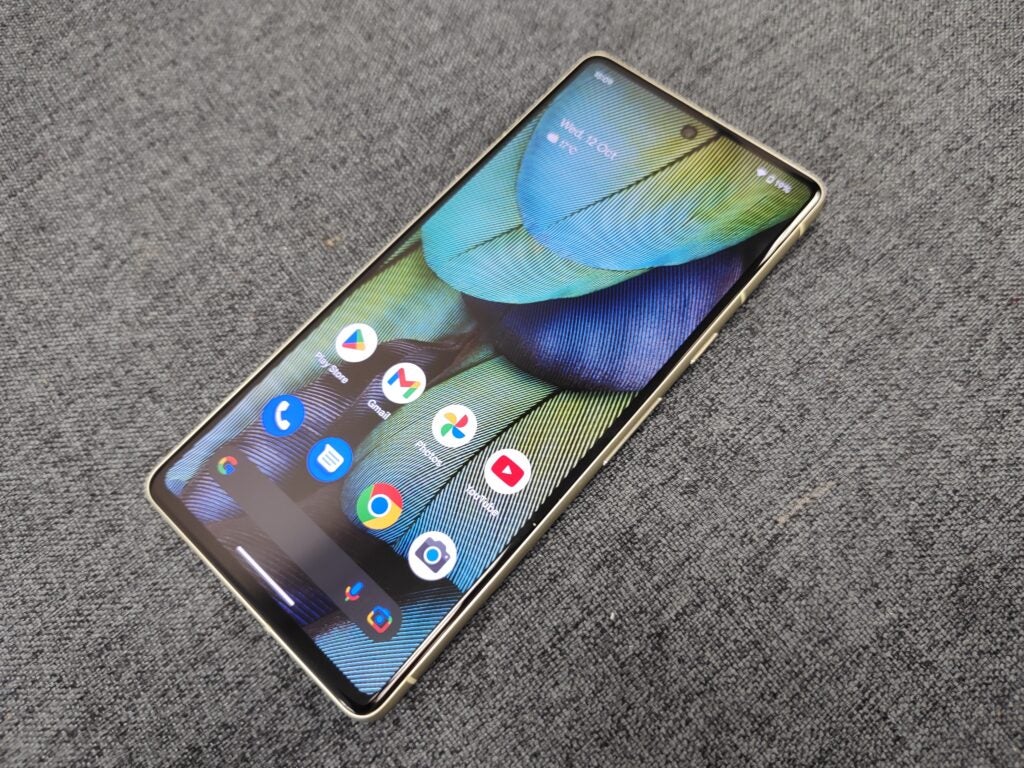
The Pixel 7 Pro has a larger screen at 6.7-inches with a resolution of 1440x3120p, with up to 1,500 nits during peak brightness, according to Google. Since it uses similar technology to Apple’s ProMotion, can also ramp up to 120Hz, dropping all the way to 10Hz for simpler tasks. This makes it feel smoother to use than the vanilla model and it helps to preserve the battery since the phone can conserve power for simple tasks like reading a static article.
The Pixel 7 Pro also boasts an OLED panel. We noted that this panel was bright and displayed colours well, making it the better option out of the two if you’re looking for the best screen.
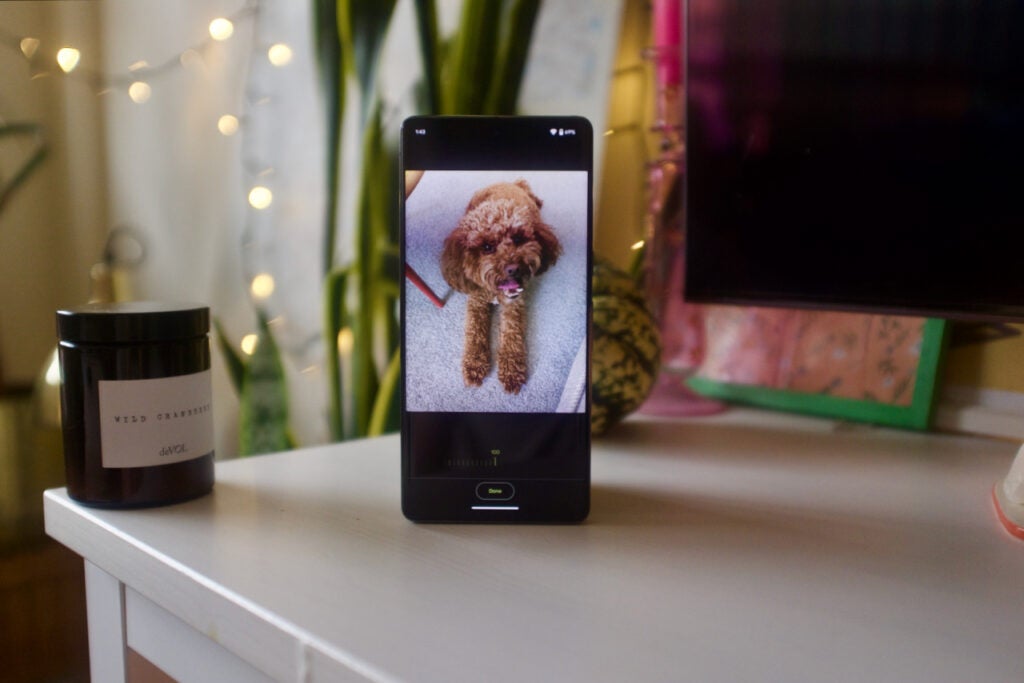
Both devices do feature Corning Gorilla Glass, which ensures that it stays free from scratches, as well as HDR support and an Always-On display. Both screens are perfectly serviceable and performed well in our testing, however, we would have to give the edge to the Pixel 7 Pro, since it boasts an OLED panel and a larger display overall.
Performance
Both the Pixel 7 and the Pixel 7 Pro come with the same chip, the Google Tensor G2. While it isn’t necessarily aiming to rival the power of chips like the Apple A16 Bionic, it aims to increase the skills of Google’s suite of AI features.
We liked using both of these devices thanks to the chipset, singling out the Recording app as one of the most accurate transcribing and voice recording tools that we’ve ever used before, turning an audio conversation into perfect text without needing an online connection.
Looking specifically at the Pixel 7, we thought that the overall performance was smooth and fluid, even if it did crash at one point. The bugs we encountered last year with the Pixel 6 were not present here, and we thought this phone is easily fast enough for most users.
The Pixel 7 comes with either 128 or 256GB of storage, 8GB LPDDR5 RAM, with support for NFC, Bluetooth 5.2 and tri-band Wi-Fi.
Turning to the Pixel 7 Pro, it comes with 12GB LPDDR5 RAM and up to 512GB storage in certain regions. In a similar vein to the Pixel 7, it felt smooth and fast to use and we thought that most games performed well, even demanding titles like Genshin Impact.
If you want an in-depth look at the spec differences between these two handsets, you can check out the comparison block at the foot of this article.
Verdict
Overall, we awarded the Pixel 7 and the Pixel 7 Pro a 4.5-star rating as well as a Trusted Reviews Recommended badge. Both devices are reliable, offer speedy performance and have a decent battery life, even if the recharging times leave something to be desired.
However, if you’re looking for the most premium device, the Pixel 7 Pro is the way to go. It comes with an extra camera sensor and a larger OLED display, as well as the coveted 120Hz refresh rate.
The Pixel 7 is still a great device and will be best if you’re looking to save money, since it packs the same G2 chip as the Pro variation and many of the same features.


